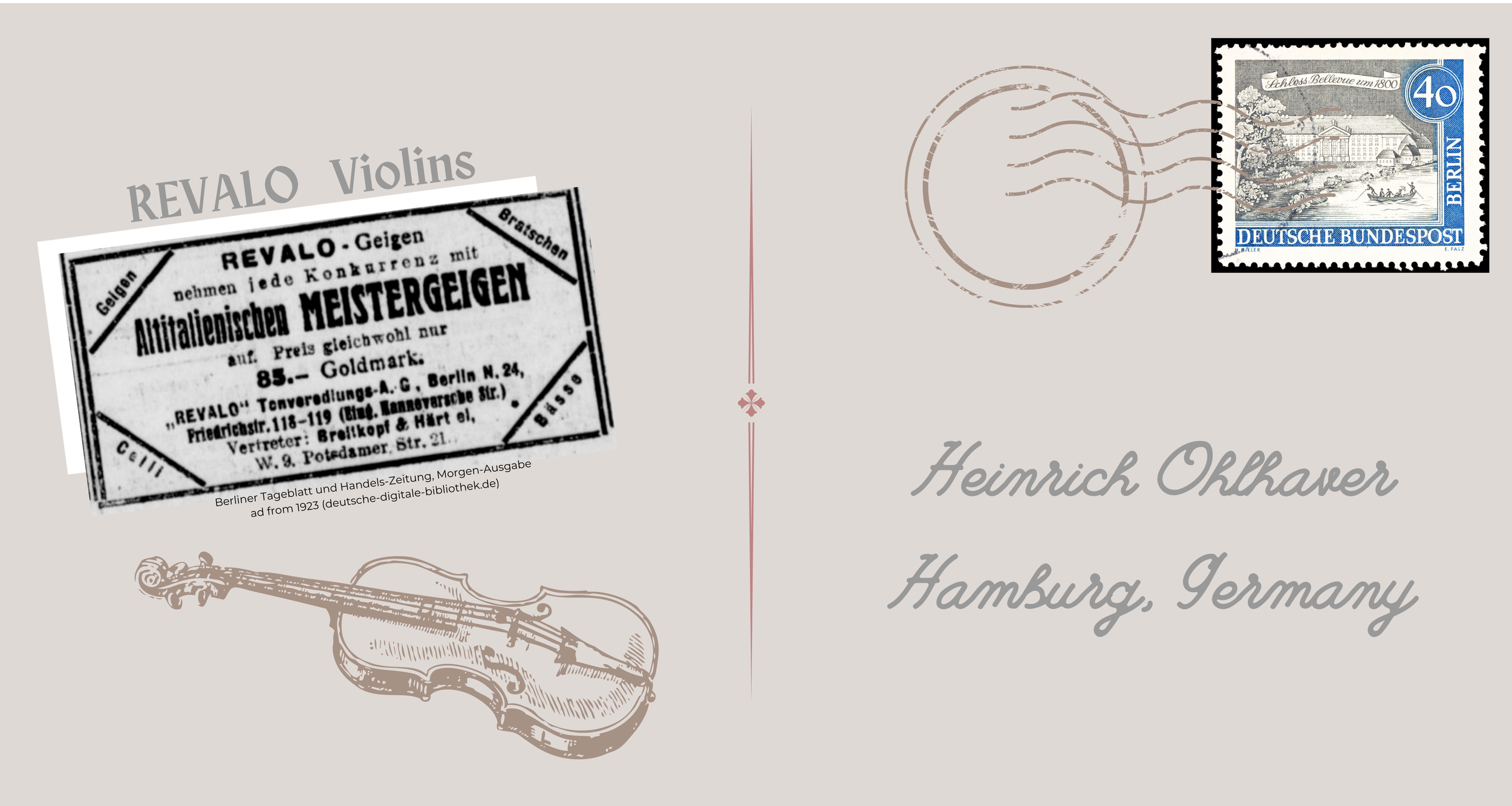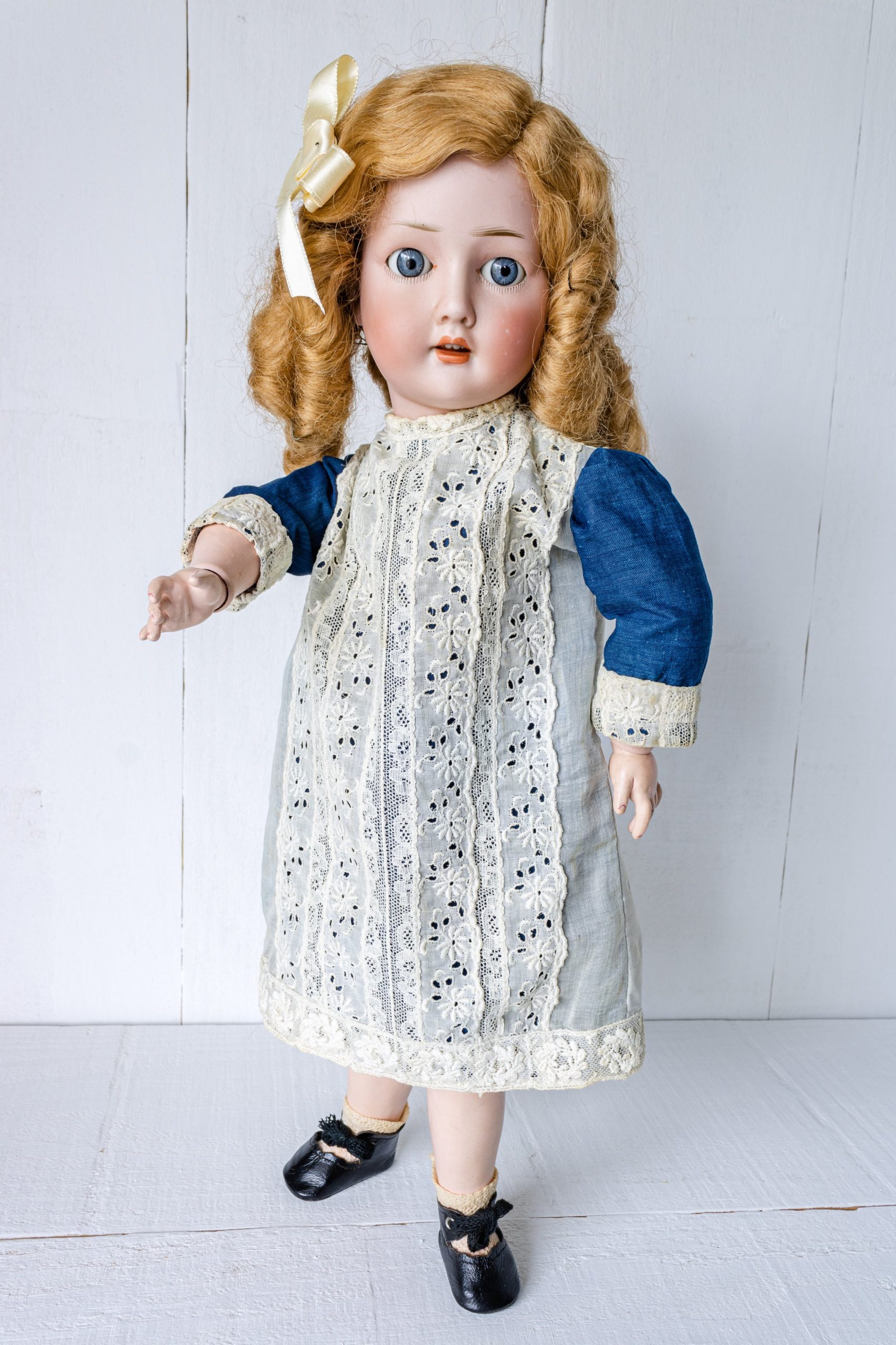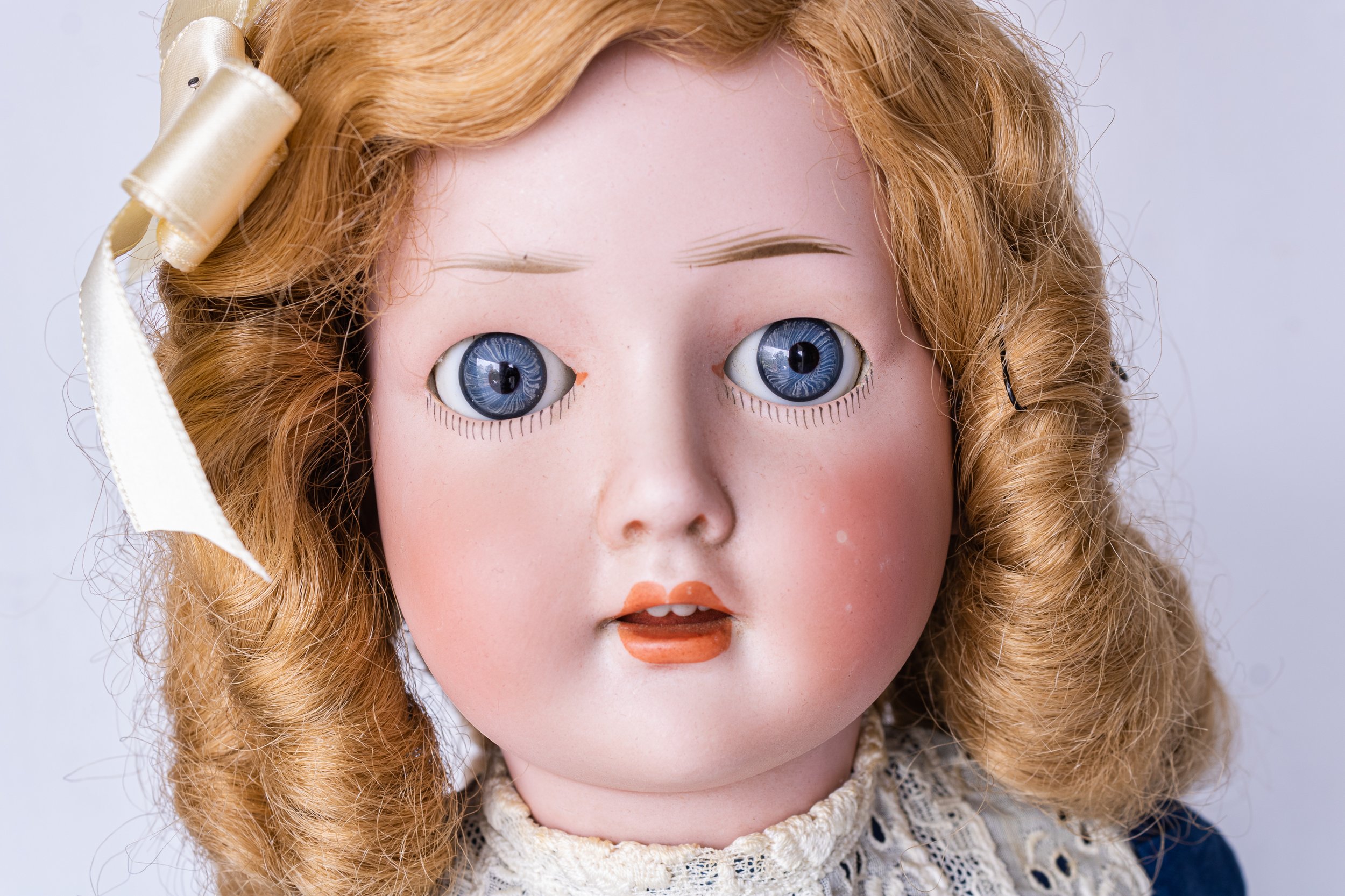The Revalo Doll Features
This darling Revalo doll stands 18 inches tall with a bisque head marked “Revalo 7 Germany.” She has a very typical German dolly face with wide open blue eyes that open and close, an open mouth that shows her teeth giving the appearance of a slight smile or readiness to converse, and unpierced ears. Unlike a lot of other German dolls of the time period, she has no dimple in her chin.
The body of the doll has ball joints with shoulder and hip joints that appear to be attached but in fact are separate pieces from the upper arms or thighs. The factory sealed them together with the limbs with the paint to cover. Without the sealant or paint covering it you almost could say she is an 8 ball jointed doll. The finish holds a pretty peach tone compared to the average yellowish varnish found on a lot of other German dolls from the early 1900s. Her hands and feet have the lightly painted red lines often found to define the fingernails and toes. Interestingly, too, the back of her legs bear an incised number 50 at the top of each leg section.
Learning about Revalo Doll History
The name REVALO comes from the German family name OHLHAVER spelled backwards. The two H letters are silent so take those out and you get OLAVER. Spell it backwards and you have REVALO, of the Revalo Dolls whose doll factory was in Sonneberg, Germany.
Ohlhavers of Hamburg, Germany
In the German Doll Encyclopedia by Jurgen and Marianne Cieslik, Cieslik wrote that the Revalo Doll factory owners listed in 1918 were a Jonny Paulus Gerhard Ohlhaver and a Hinrich Ohlhaver of Sande near Bergedorf. Sande lies within Hamburg, Germany. Cieslik claims the owners changed over to another Ohlhaver family member in 1922.
Revalo Violins
Curious to see if German online newspapers might tell any interesting stories about these Ohlhavers, I went exploring into the past. The name Ohlhaver brought up quite a few hits in several newspapers during 1921 regarding a merchant Heinrich Ohlhaver of Hamburg, Germany. The stories told of a man who took his name, turned it around backwards to name his violin invention REVALO.
It may be the same Heinrich Ohlhaver. Maybe he tired of doll manufacturing and wanted to go into the music trade doing something different from the family. (Big MAYBE). Could that be why another Ohlhaver got listed as the owner of the Revalo doll factory in 1922? The newspapers, both German and French, claimed Heinrich Ohlhaver was not an experienced maker of violins and express incredulity at his claim to make cheap violins sound like the amazing Stradivarius. An ad advertising his Revalo violins from a German newspaper in 1923 is shown below.

He has found, it seems, a process thanks to which the violins of the most common can make sounds comparable to those of the most famous Stradivarius.
(La Lanterne : Journal Politique Quotidien, Paris, Jan. 27, 1921, p. 2)
Newspapers continued to discuss Ohlhaver’s violins even into 1922 with explanations of the system used to produce the violin while naming the REVALO company in Berlin.
Who knows? For now, one might conclude with the knowledge that Revalo Dolls derived their name the same way the Revalo violin did.

an 18 inch German Revalo Doll redressed
**See some other antique German doll marks here.
